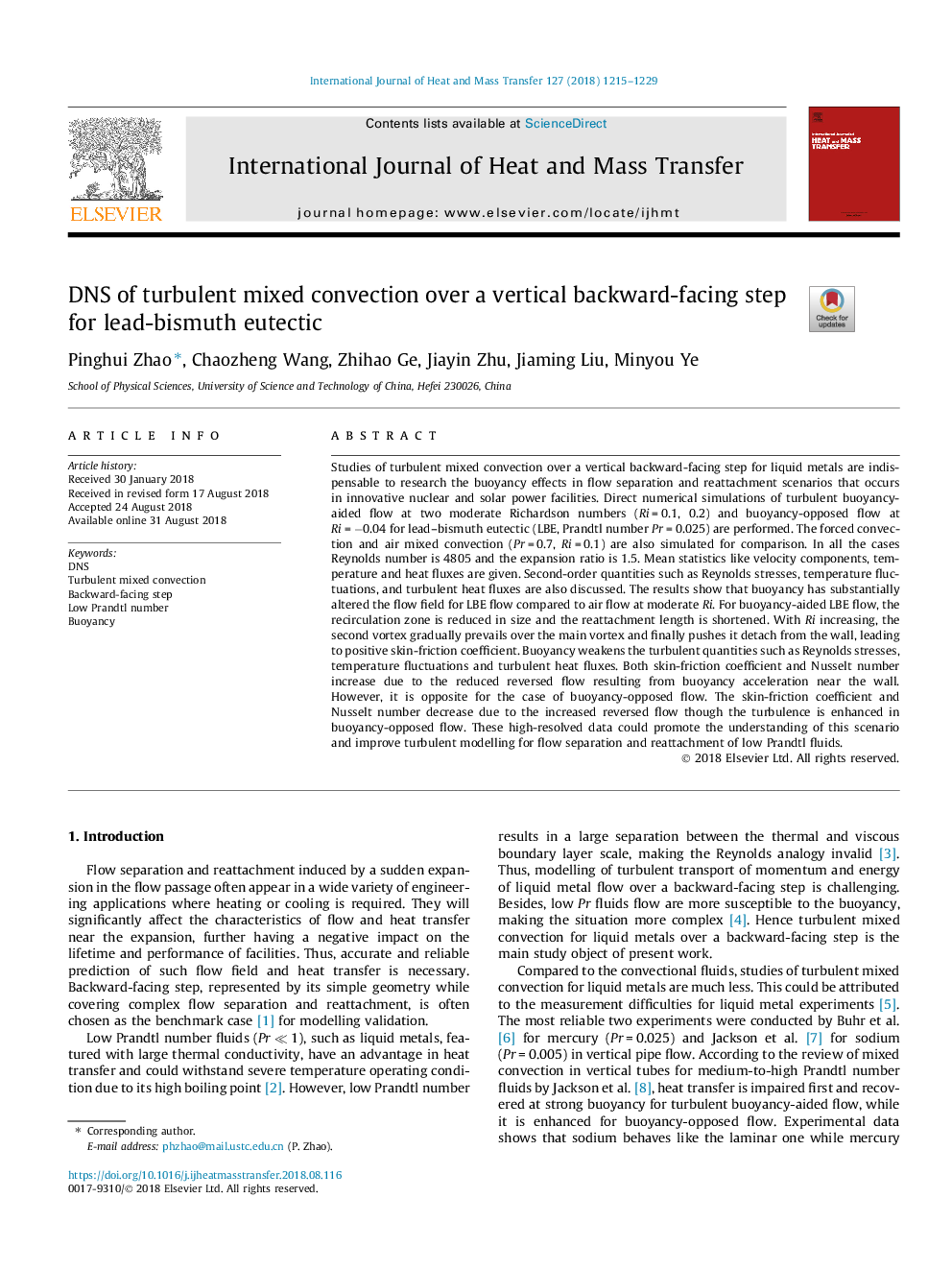| کد مقاله | کد نشریه | سال انتشار | مقاله انگلیسی | نسخه تمام متن |
|---|---|---|---|---|
| 10127440 | 1645051 | 2018 | 15 صفحه PDF | دانلود رایگان |
عنوان انگلیسی مقاله ISI
DNS of turbulent mixed convection over a vertical backward-facing step for lead-bismuth eutectic
دانلود مقاله + سفارش ترجمه
دانلود مقاله ISI انگلیسی
رایگان برای ایرانیان
کلمات کلیدی
موضوعات مرتبط
مهندسی و علوم پایه
مهندسی شیمی
جریان سیال و فرایندهای انتقال
پیش نمایش صفحه اول مقاله

چکیده انگلیسی
Studies of turbulent mixed convection over a vertical backward-facing step for liquid metals are indispensable to research the buoyancy effects in flow separation and reattachment scenarios that occurs in innovative nuclear and solar power facilities. Direct numerical simulations of turbulent buoyancy-aided flow at two moderate Richardson numbers (Riâ¯=â¯0.1, 0.2) and buoyancy-opposed flow at Riâ¯=â¯â0.04 for lead-bismuth eutectic (LBE, Prandtl number Prâ¯=â¯0.025) are performed. The forced convection and air mixed convection (Prâ¯=â¯0.7, Riâ¯=â¯0.1) are also simulated for comparison. In all the cases Reynolds number is 4805 and the expansion ratio is 1.5. Mean statistics like velocity components, temperature and heat fluxes are given. Second-order quantities such as Reynolds stresses, temperature fluctuations, and turbulent heat fluxes are also discussed. The results show that buoyancy has substantially altered the flow field for LBE flow compared to air flow at moderate Ri. For buoyancy-aided LBE flow, the recirculation zone is reduced in size and the reattachment length is shortened. With Ri increasing, the second vortex gradually prevails over the main vortex and finally pushes it detach from the wall, leading to positive skin-friction coefficient. Buoyancy weakens the turbulent quantities such as Reynolds stresses, temperature fluctuations and turbulent heat fluxes. Both skin-friction coefficient and Nusselt number increase due to the reduced reversed flow resulting from buoyancy acceleration near the wall. However, it is opposite for the case of buoyancy-opposed flow. The skin-friction coefficient and Nusselt number decrease due to the increased reversed flow though the turbulence is enhanced in buoyancy-opposed flow. These high-resolved data could promote the understanding of this scenario and improve turbulent modelling for flow separation and reattachment of low Prandtl fluids.
ناشر
Database: Elsevier - ScienceDirect (ساینس دایرکت)
Journal: International Journal of Heat and Mass Transfer - Volume 127, Part C, December 2018, Pages 1215-1229
Journal: International Journal of Heat and Mass Transfer - Volume 127, Part C, December 2018, Pages 1215-1229
نویسندگان
Pinghui Zhao, Chaozheng Wang, Zhihao Ge, Jiayin Zhu, Jiaming Liu, Minyou Ye,